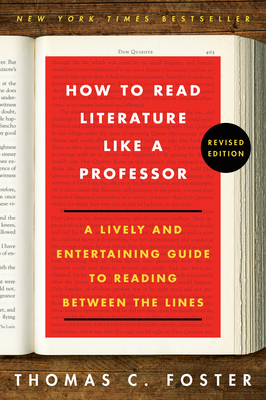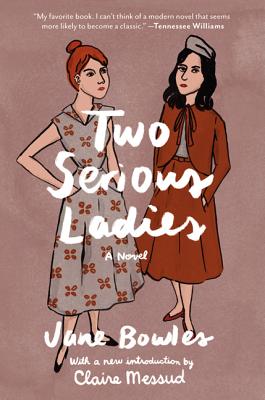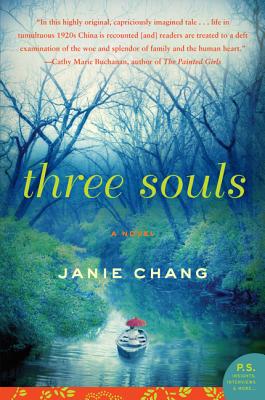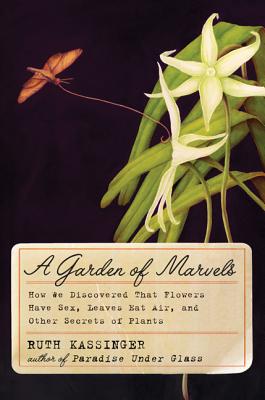What does it mean when a fictional hero takes a journey? Shares a meal? Gets drenched in a sudden rain shower? Often, there is much more going on in a novel or poem than is readily visible on the surface—a symbol, maybe, that remains elusive, or an unexpected twist on a character—and there's that sneaking suspicion that the deeper meaning of a literary text keeps escaping you.
In this practical and amusing guide to literature, Thomas C. Foster shows how easy and gratifying it is to unlock those hidden truths, and to discover a world where a road leads to a quest; a shared meal may signify a communion; and rain, whether cleansing or destructive, is never just rain. Ranging from major themes to literary models, narrative devices, and form, How to Read Literature Like a Professor is the perfect companion for making your reading experience more enriching, satisfying, and fun.
The only novel by avant-garde literary star Jane Bowles, the highly influential wife of legendary writer Paul Bowles, Two Serious Ladies is a modernist cult classic, mysterious, profound, anarchic, and funny, that follows two "respectable" women as they descend into debauchery--updated with an introduction by Claire Messud, bestselling author of The Emperor's Children and The Woman Upstairs.
Christina Goering, eccentric and adventurous, and Frieda Copperfield, anxious but enterprising, are two serious ladies who want to live outside of themselves. Old friends, each will take a surprising path in search of salvation: during a visit to Panama, Mrs. Copperfield abandons her husband, finding solace in a relationship with a teenage prostitute; while Miss Goering, a wealthy spinster, pursues sainthood via sordid encounters with the basest of men. At the end the two women meet again, each radically altered by her experience.
An absorbing novel of romance and revolution, loyalty and family, sacrifice and undying love
We have three souls, or so I'd been told. But only in death could I confirm this....
So begins the haunting and captivating tale, set in 1935 China, of the ghost of a young woman named Leiyin, who watches her own funeral from above and wonders why she is being denied entry to the afterlife. Beside her are three souls—stern and scholarly yang; impulsive, romantic yin; and wise, shining hun—who will guide her toward understanding. She must, they tell her, make amends.
As Leiyin delves back in time with the three souls to review her life, she sees the spoiled and privileged teenager she once was, a girl who is concerned with her own desires while China is fractured by civil war and social upheaval. At a party, she meets Hanchin, a captivating left-wing poet and translator, and instantly falls in love with him.
When Leiyin defies her father to pursue Hanchin, she learns the harsh truth—that she is powerless over her fate. Her punishment for disobedience leads to exile, an unwanted marriage, a pregnancy, and, ultimately, her death. And when she discovers what she must do to be released from limbo into the afterlife, Leiyin realizes that the time for making amends is shorter than she thought.
Suffused with history and literature, Three Souls is an epic tale of revenge and betrayal, forbidden love, and the price we are willing to pay for freedom.
A witty and engaging history of the first botanists, interwoven with stories of today's extraordinary plants found in the garden and the lab
In Paradise Under Glass, Ruth Kassinger recounts with grace and humor her journey from brown thumb to green, sharing the lessons that she learned from building a home conservatory in the wake of a devastating personal crisis.
In A Garden of Marvels, she extends the story. "This book was born of a murder, a murder I committed," she begins. The victim was a kumquat tree. Though she diligently did her best—watering, fertilizing, repotting, and pruning—the plant turned brown and brittle. Why did the kumquat die when other plants in the garden that received the same attention thrived? she wondered. It was an experience that offered invaluable insight.
While she knew the basic rules of caring for indoor plants, Kassinger realized that she understood very little about plant physiology—how roots, stems, leaves, and flowers actually function. Determined not to repeat her failure, she set out to learn the fundamentals of botany in order to become a better gardener. A Garden of Marvels is the story of her wise and enchanting odyssey to discover the secret life of plants.
Kassinger retraces the progress of the first botanists—including a melancholy Italian anatomist, a renegade French surgeon, a stuttering English minister, an obsessive German schoolteacher, and Charles Darwin—who banished myths and misunderstandings and discovered that flowers have sex, leaves eat air, roots choose their food, and hormones make morning glories climb fence posts. She goes out into the world as well, visiting modern gardens, farms, and labs to discover the science behind extraordinary plants like one-ton pumpkins, truly black petunias, ferns that eat the arsenic in contaminated soil, biofuel grass that grows twelve feet tall, and the world's only photosynthesizing animal. Kassinger also introduces us to modern scientific research that offers hope for combatting climate change and alleviating world hunger.
She then transfers her insights to her own garden, where she nurtures a "cocktail" tree that bears five kinds of fruit, cures an ailing Buddha's Hand plant with beneficial fungi, and gets a tree to text her when it's thirsty. Intertwining personal anecdotes, accessible science, and little-known history, A Garden of Marvels takes us on an eye-opening journey into Kassinger's garden—and yours—offering us a new appreciation of this exquisite gift of nature: "Our garden is more than a marvel. It's as close to a miracle as there is on Earth."
In this practical and amusing guide to literature, Thomas C. Foster shows how easy and gratifying it is to unlock those hidden truths, and to discover a world where a road leads to a quest; a shared meal may signify a communion; and rain, whether cleansing or destructive, is never just rain. Ranging from major themes to literary models, narrative devices, and form, How to Read Literature Like a Professor is the perfect companion for making your reading experience more enriching, satisfying, and fun.
The only novel by avant-garde literary star Jane Bowles, the highly influential wife of legendary writer Paul Bowles, Two Serious Ladies is a modernist cult classic, mysterious, profound, anarchic, and funny, that follows two "respectable" women as they descend into debauchery--updated with an introduction by Claire Messud, bestselling author of The Emperor's Children and The Woman Upstairs.
Christina Goering, eccentric and adventurous, and Frieda Copperfield, anxious but enterprising, are two serious ladies who want to live outside of themselves. Old friends, each will take a surprising path in search of salvation: during a visit to Panama, Mrs. Copperfield abandons her husband, finding solace in a relationship with a teenage prostitute; while Miss Goering, a wealthy spinster, pursues sainthood via sordid encounters with the basest of men. At the end the two women meet again, each radically altered by her experience.
An absorbing novel of romance and revolution, loyalty and family, sacrifice and undying love
We have three souls, or so I'd been told. But only in death could I confirm this....
So begins the haunting and captivating tale, set in 1935 China, of the ghost of a young woman named Leiyin, who watches her own funeral from above and wonders why she is being denied entry to the afterlife. Beside her are three souls—stern and scholarly yang; impulsive, romantic yin; and wise, shining hun—who will guide her toward understanding. She must, they tell her, make amends.
As Leiyin delves back in time with the three souls to review her life, she sees the spoiled and privileged teenager she once was, a girl who is concerned with her own desires while China is fractured by civil war and social upheaval. At a party, she meets Hanchin, a captivating left-wing poet and translator, and instantly falls in love with him.
When Leiyin defies her father to pursue Hanchin, she learns the harsh truth—that she is powerless over her fate. Her punishment for disobedience leads to exile, an unwanted marriage, a pregnancy, and, ultimately, her death. And when she discovers what she must do to be released from limbo into the afterlife, Leiyin realizes that the time for making amends is shorter than she thought.
Suffused with history and literature, Three Souls is an epic tale of revenge and betrayal, forbidden love, and the price we are willing to pay for freedom.
A witty and engaging history of the first botanists, interwoven with stories of today's extraordinary plants found in the garden and the lab
In Paradise Under Glass, Ruth Kassinger recounts with grace and humor her journey from brown thumb to green, sharing the lessons that she learned from building a home conservatory in the wake of a devastating personal crisis.
In A Garden of Marvels, she extends the story. "This book was born of a murder, a murder I committed," she begins. The victim was a kumquat tree. Though she diligently did her best—watering, fertilizing, repotting, and pruning—the plant turned brown and brittle. Why did the kumquat die when other plants in the garden that received the same attention thrived? she wondered. It was an experience that offered invaluable insight.
While she knew the basic rules of caring for indoor plants, Kassinger realized that she understood very little about plant physiology—how roots, stems, leaves, and flowers actually function. Determined not to repeat her failure, she set out to learn the fundamentals of botany in order to become a better gardener. A Garden of Marvels is the story of her wise and enchanting odyssey to discover the secret life of plants.
Kassinger retraces the progress of the first botanists—including a melancholy Italian anatomist, a renegade French surgeon, a stuttering English minister, an obsessive German schoolteacher, and Charles Darwin—who banished myths and misunderstandings and discovered that flowers have sex, leaves eat air, roots choose their food, and hormones make morning glories climb fence posts. She goes out into the world as well, visiting modern gardens, farms, and labs to discover the science behind extraordinary plants like one-ton pumpkins, truly black petunias, ferns that eat the arsenic in contaminated soil, biofuel grass that grows twelve feet tall, and the world's only photosynthesizing animal. Kassinger also introduces us to modern scientific research that offers hope for combatting climate change and alleviating world hunger.
She then transfers her insights to her own garden, where she nurtures a "cocktail" tree that bears five kinds of fruit, cures an ailing Buddha's Hand plant with beneficial fungi, and gets a tree to text her when it's thirsty. Intertwining personal anecdotes, accessible science, and little-known history, A Garden of Marvels takes us on an eye-opening journey into Kassinger's garden—and yours—offering us a new appreciation of this exquisite gift of nature: "Our garden is more than a marvel. It's as close to a miracle as there is on Earth."




No comments:
Post a Comment